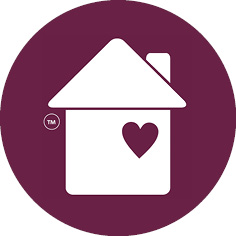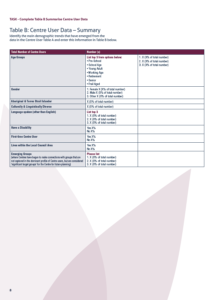Identify the different age groups you have in your Table A and calculate the number of participants for each. For example, the Main Age Group for Yoga was Seniors which had 10 participants, that’s 10 participants for Seniors (regardless of the age of the remainder of the group). If the next row’s program also had mostly Seniors, the number of participants for that program will be added to the 10 already counted for Seniors.
Once you have determined the number of participants for each Main Age Group, calculate the percentage of the Total Number of Centre Users. For example, if there were 35 Seniors in total and 200 Total Number of Centre Users:
(35 Seniors ÷ 200 Total Users) x 100 = 17.5%
Note: websites like percentage calculator can do this math for you if you do not trust your own calculations.
Calculate the percentage for each Main Age Group. Double check your work by ensuring all percentages added together equals 100%. Then list the top three most prominent in Table B.



